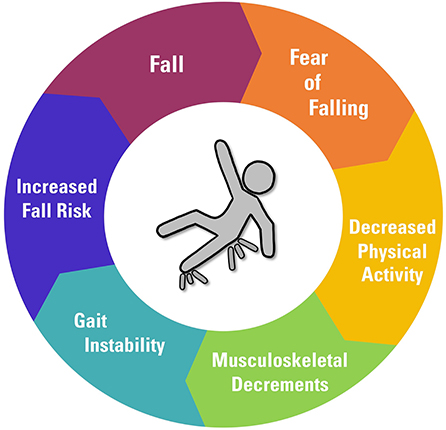The 7-Minute Rule for Dementia Fall Risk
6 Easy Facts About Dementia Fall Risk Explained
Table of ContentsUnknown Facts About Dementia Fall RiskGetting My Dementia Fall Risk To Work10 Simple Techniques For Dementia Fall RiskDementia Fall Risk Fundamentals Explained
A fall threat assessment checks to see how most likely it is that you will fall. It is mostly done for older adults. The assessment generally consists of: This consists of a collection of questions about your total wellness and if you have actually had previous falls or issues with balance, standing, and/or strolling. These devices test your stamina, balance, and stride (the method you walk).Treatments are recommendations that might decrease your threat of falling. STEADI consists of three steps: you for your threat of falling for your risk aspects that can be improved to try to stop drops (for example, equilibrium issues, damaged vision) to lower your risk of dropping by utilizing reliable strategies (for example, supplying education and learning and resources), you may be asked numerous inquiries including: Have you fallen in the past year? Are you fretted about falling?
You'll sit down once again. Your supplier will inspect how much time it takes you to do this. If it takes you 12 seconds or more, it may indicate you are at higher danger for a loss. This examination checks toughness and equilibrium. You'll sit in a chair with your arms crossed over your chest.
The positions will obtain harder as you go. Stand with your feet side-by-side. Move one foot halfway onward, so the instep is touching the huge toe of your other foot. Move one foot fully in front of the various other, so the toes are touching the heel of your various other foot.
10 Easy Facts About Dementia Fall Risk Shown
A lot of drops take place as an outcome of multiple adding factors; consequently, handling the danger of falling begins with determining the variables that add to fall threat - Dementia Fall Risk. A few of one of the most relevant danger variables include: Background of prior fallsChronic clinical conditionsAcute illnessImpaired stride and balance, reduced extremity weaknessCognitive impairmentChanges in visionCertain high-risk medicines and polypharmacyEnvironmental variables can also boost the threat for falls, including: Insufficient lightingUneven or damaged flooringWet or slippery floorsMissing or harmed hand rails and grab barsDamaged or incorrectly equipped tools, such as beds, wheelchairs, or walkersImproper use assistive devicesInadequate supervision of individuals living in the NF, including those who display hostile behaviorsA successful fall danger administration program calls for a complete professional analysis, with input from all members of the interdisciplinary group

The care plan should likewise include interventions that are system-based, review such as those that advertise a secure setting (appropriate lighting, handrails, get bars, and so on). The performance of the treatments need to be evaluated periodically, and the care strategy changed as essential to mirror adjustments in the loss threat analysis. Applying an autumn danger administration system utilizing evidence-based best practice can reduce the prevalence of drops in the NF, while restricting the capacity for fall-related injuries.
The Single Strategy To Use For Dementia Fall Risk
The AGS/BGS standard suggests evaluating all adults matured 65 years and older for fall danger every year. This screening includes asking clients whether they have actually dropped 2 or even more times in the past year or sought medical focus for a fall, or, if they have actually not fallen, whether they feel unstable when strolling.
Individuals that have dropped when without injury should have their equilibrium and stride assessed; those with gait or balance problems should get additional evaluation. A background of 1 autumn without injury and without gait or balance troubles does not necessitate additional assessment beyond continued yearly fall danger testing. Dementia Fall Risk. An autumn danger analysis is required as part of the Welcome to Medicare examination

How Dementia Fall Risk can Save You Time, Stress, and Money.
Documenting a falls background is among the high quality signs for autumn prevention and monitoring. A critical part of risk evaluation is a medication evaluation. Several classes of medications increase loss threat (Table 2). copyright drugs particularly are independent forecasters of falls. These medications tend to be sedating, alter the sensorium, and impair equilibrium and gait.
Postural hypotension can typically be minimized by decreasing the dose of blood pressurelowering drugs and/or quiting medications that have orthostatic hypotension as a negative effects. Usage of above-the-knee assistance hose pipe and copulating the head of the bed raised may also lower postural decreases in blood pressure. The preferred components of a fall-focused checkup are received Box 1.

A TUG time higher than or equal to 12 secs suggests high fall danger. Being not able to stand up from a chair of knee elevation without making use of one's arms indicates enhanced autumn danger.